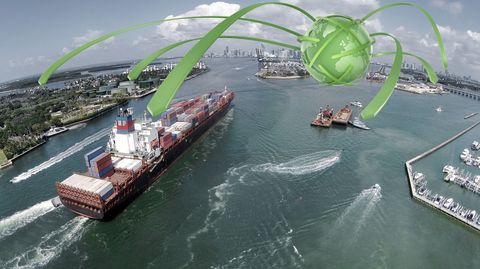More than half (53 per cent) of businesses in the Asia-Pacific Economic Co-operation (APEC) region intend to increase their investments in 2017, despite a slowdown in trade in these territories.
This is according to research from PricewaterhouseCoopers (PwC), which surveyed more than 1,100 business leaders in the 21 APEC countries. It found that the majority were eager to up the ante when it came to future investments over the next 12 months, even though they were not completely confident about revenue growth, due in large part to concerns about the progress of the free trade agenda in the region in 2016.
PwC believes this attitude is positive in the long term, as it found that 69 per cent of the increased investment would stay local. Of the 21 nations included in APEC, China, the US, Indonesia and Singapore are poised to attract more interest from chief executive officers (CEOs) of businesses from across the globe.
The survey also revealed a regional diversification strategy, with almost a third (31 per cent) of businesses intending to focus additional investment in economies outside of the APEC region.
Less than a third (28 per cent) of APEC business leaders still have high hopes about revenue growth in 2017. This marks the second year running that they have been reserved about predictions for growth.
When PwC analysed the results of the survey further, they found that business leaders in young and fast-growing economies are more positive about near-term growth. For example, 65 per cent of CEOs in the Philippines and 50 per cent of those in Vietnam are extremely confident about the economy.
While more business leaders reported seeing notable progress towards free trade in the Asia-Pacific region in 2016 - 22 per cent vs 15 per cent in 2014 - the majority (53 per cent) of CEOs described progress as 'slow' this year.
PwC notes that the competitive environment in APEC economies is in flux, with more business leaders - 20 per cent - seeing a firm in the same region as their nearest rival. Almost a fifth (18 per cent) of those polled believed a multinational organization in an emerging economy was the real competition. This compares to ten per cent and 12 per cent, respectively, two years ago.
The survey revealed APEC business leaders also have a mixed outlook when it comes to gross domestic product (GDP) growth in China. They predict that between 2017 and 2020, the pace of progress will be six per cent or below per year. However, this does not mean they are shunning the country altogether, as they still want to build their brand, expand and create partnerships in the country. According to PwC, these are the most common strategies among both foreign and domestic investors in China.
Raymund Chao, chairman of PwC China, believes it to be very significant that investors are able to see beyond the economic slowdown, adding that China is a prime example of this attitude. The country's scale and range of skills are enough to help business leaders put aside their concerns when it comes to investment.
"China remains a powerhouse of potential for APEC businesses for new products, and partnerships," he added.
PwC's survey revealed that CEOs continue to feel uncertain about policy-related costs, with just over one in ten (14 per cent) claiming to be confident about predicting compliance costs and tax liabilities. Most respondents cited the regulatory environment - which covers transparency and corruption - as the biggest factor in cross border investment within the APEC region.
Furthermore, more than half (58 per cent) of those polled expect this environment to become more influential when it comes to investment in APEC economies over the next three to five years. This suggests that more money is likely to be pumped into the region if the policy environment is healthy and the right talent is available.
Commenting on the results of the survey, Orlando Marchesi, country senior partner at PwC Peru, said: "A subdued level of confidence in the business outlook is hardly surprising given geopolitical events this year. What's critical for the region is that business leaders hold their nerve on investment and innovation.
"For the foreseeable future, APEC business leaders will have to balance the short-term economic outlook with investing for the long term. The wider regulatory and tax environment are critical factors in business confidence and investment. Standing still on regulatory conditions is not the way to be competitive in a paradoxically cash-rich but slow-growth world."
The harnessing of digital tools to augment their trade and operational capabilities were also shown to be playing a key part in strategies for revenue growth, helping business leaders improve efficiency while also improving customer experience and asset optimization.
Mr Marchesi explained: "APEC's manufacturing and resource-rich economies have the potential to show how data analytics can be used to inform business strategy, using information from production, partners, logistics, customers and the shop floor.
"The power of digital data is not in how much of it you gather, but how you action the information it gives you."






